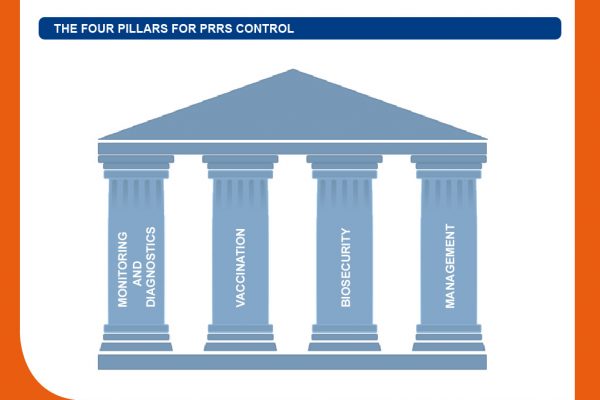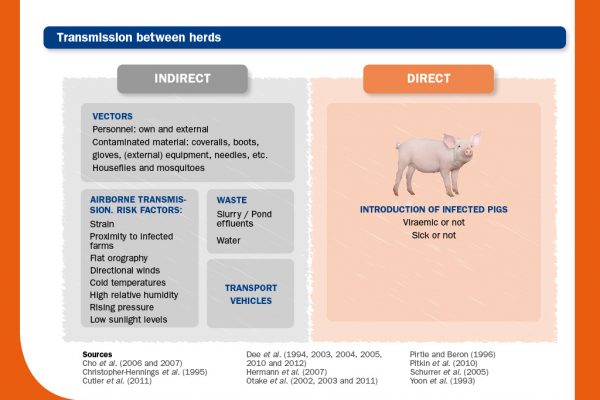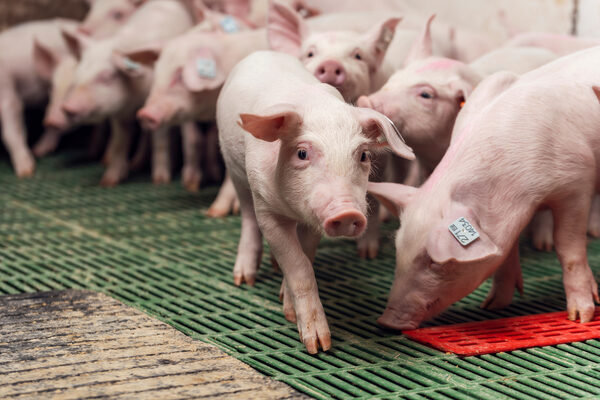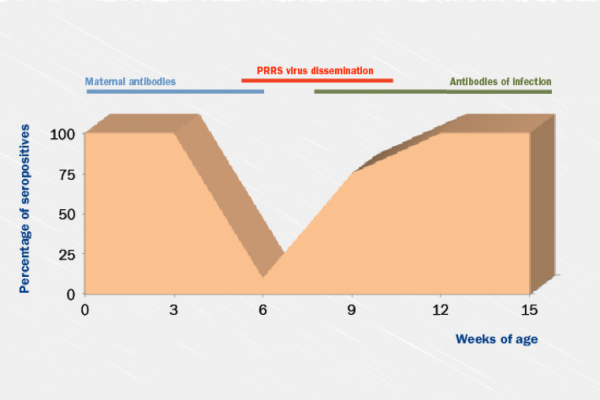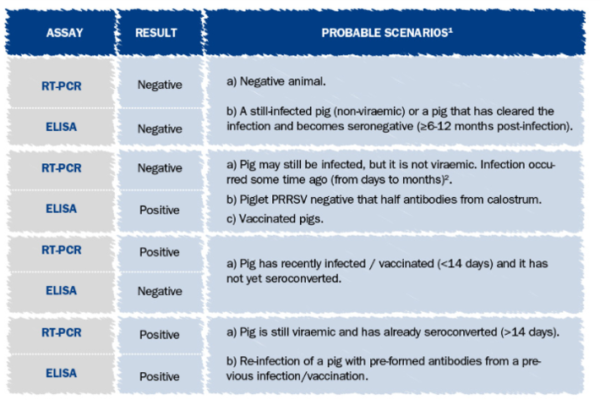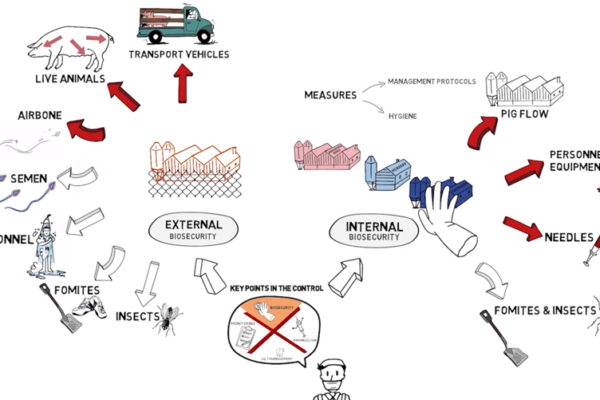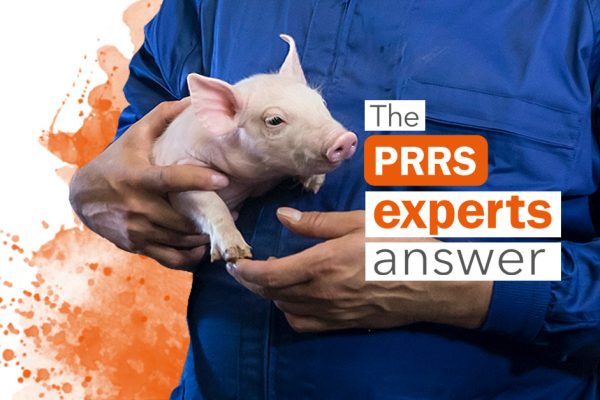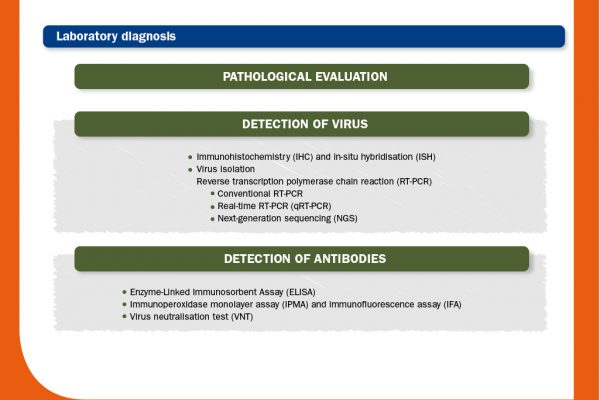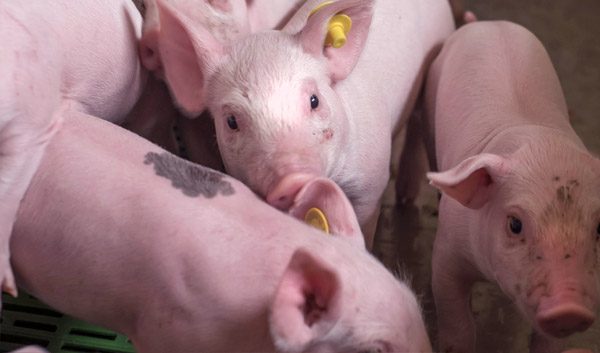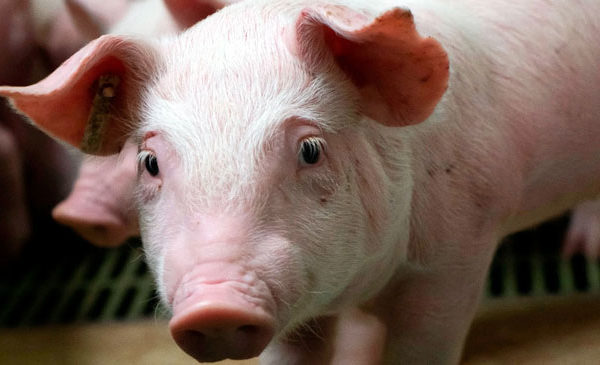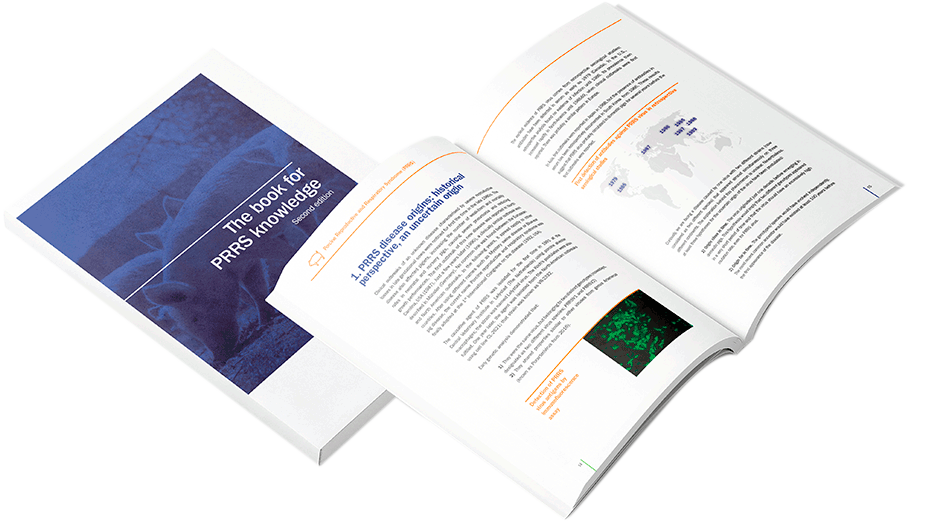In Spain we are having many problems with highly pathogenic PRRSV1 strains, and the vaccines do not seem to work at all. Would it be recommended to stop vaccinating sows and piglets in these cases? The PRRS vaccine has been frequently used for therapeutic rather than prophylactic purposes, with variable results. The problem with this application is that when animals infected with a wild-type virus are vaccinated with a live... read more test →
Regarding meat transmission of PRRS in the fresh meat market from PRRS positive farms: what protocol do countries follow when slaughtering PRRS positive pigs? And how many pigs that are positive still have the antigen within the glands at age of slaughter of 23 weeks? PRRS can be found in pig meat of positive pigs and could be transmitted to other naïve pigs if they eat infected meat. Under experimental... read more test →
Is it necessary to vaccinate and revaccinate piglets with a PRRS modified live vaccine? When is the optimal time to do it? In a geographical area with a high incidence of PRRS. On a stable PRRS-positive farm, what do you think about piglets vaccination with a modified live vaccine (MLV) (negative at birth) at 7 days of age and then again at 3.5 weeks of age? Vaccination of piglets is... read more test →
In a PRRS stable farm, whereby no recent outbreak of PRRS and that the sows are vaccinated every 4 months, what do we expect to see from the piglet’s titre? Will maternally derived antibodies (MDA) affect serology profile of the piglets and is it a good sign to see more seronegative or more seropositive piglets? Live attenuated vaccines applied to the entire population in regular periods of 4 months... read more test →
Verify seroconversion of all animals on a farm is a method used today on multiplication and commercial farms in Spain/Europe? If it is, in what proportion of these evaluations are PCR and ELISA used? Is the gold standard always used or are other commercial options available? At what ages should samples be taken and how often should this be done to get a clear picture of what is happening on... read more test →
Repair and maintenance workers can unintentionally bring PRRS virus onto farms. How can we prevent this when some of their equipment is hard to wash and disinfect? Farm maintenance is one of the ways a new PRRS virus strain can be introduced on a farm. Obviously, without maintenance there would not be this specific risk, but everyone knows that farms need maintenance. After reviewing some outbreaks due to this... read more test →
Inactivated vaccines against PRRS have been used as a complement in vaccine plans with live attenuated vaccines. We already know that inactivated vaccines do not produce good protection when used in animals that have not had contact with an active PRRS virus; they do not generate seroconversion in this case. However, when these vaccines are used in animals previously infected or vaccinated with attenuated vaccines, they generate a marked and... read more test →
On a farrow to nursery farm with 200 sows, 20 blood samples were taken from sows, gilts, and piglets. All samples were negative for PRRS by ELISA except one, which was from a 5th parity sow. No pathology associated with PRRS was observed, and no vaccination against this disease was done. The farm has good performance, 90% fertility and 14 piglets weaned per sow. How should we interpret these analytical... read more test →
Once a sow vaccination program has been initiated on a farm that was previously negative for PRRS but has recently had an outbreak, when should piglet vaccination start? When a negative farm becomes infected with PRRS virus it will continue to produce piglets that have been infected during gestation and are therefore viremic for at least a 4-month period. When these piglets are vaccinated, they tend not to handle the... read more test →
Is there any interference when administering PRRS and mycoplasma vaccines simultaneously? If yes, how long should I wait between administering? Based on the data we have, there is no interference between simultaneously administering the PRRS and M. hyo vaccines as long as they are injected at independent points. The simultaneous administration of modified live vaccines (MLV) and inactivated vaccines is a common practice in human medicine, and there is a... read more test →
NEWSLETTER
DON’T MISS ANY UPDATES ON PRRS CONTROL
Categories
- Biosecurity (15)
- Diagnosis (28)
- ID&IM administration (8)
- kol (10)
- Management (35)
- Monitoring (1)
- News (1)
- PRRS virus (37)
- Vaccination (69)

